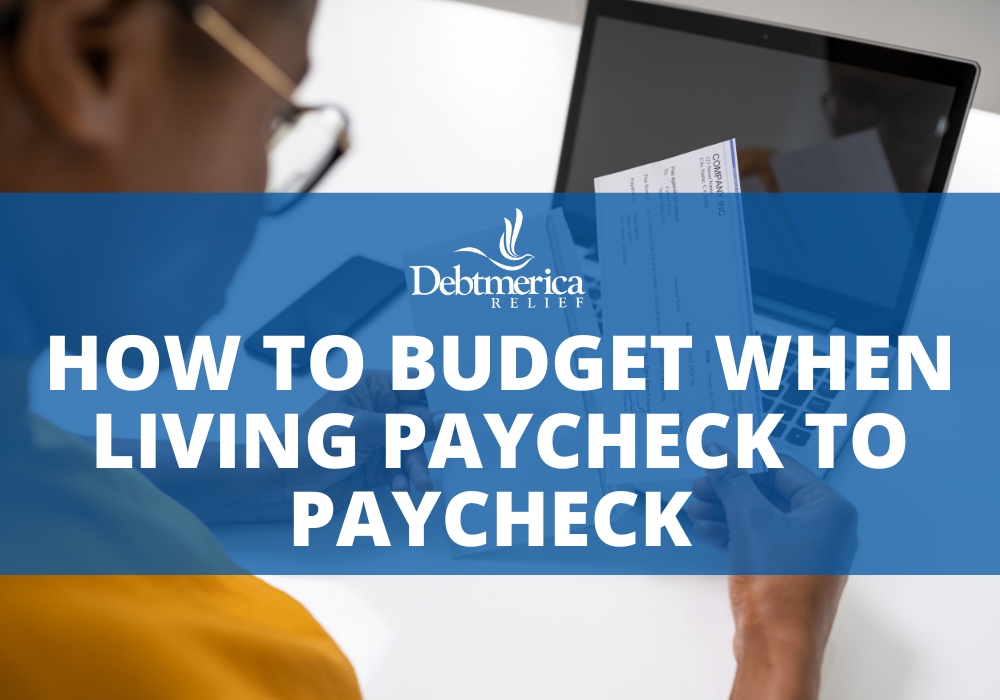How to Budget When Living Paycheck to Paycheck

Living paycheck to paycheck can be challenging, but with the right strategies and mindset, you can regain control of your finances and build a more secure future. This article will guide you through practical steps to budget effectively, reduce expenses, increase savings, and improve your overall financial situation.
Understanding the Paycheck-to-Paycheck Lifestyle
Living paycheck to paycheck means relying entirely on your next paycheck to cover your monthly expenses, leaving little to no room for savings or unexpected costs. This lifestyle is often characterized by a lack of emergency funds or savings for future goals and regular use of credit cards or loans to cover essential expenses. These scenarios can result in constant worry about making ends meet and managing unexpected expenses. Breaking free from this cycle requires careful budgeting and disciplined financial habits.
Steps to Budget When Living Paycheck to Paycheck
While there are no magic answers on how to stop living paycheck to paycheck, there are practical and relatively easy ways budget for this lifestyle.
Track Your Income and Expenses
First, you need to understand your cash flow. Begin by tracking all sources of income and documenting every expense. You can use budgeting apps, spreadsheets, or even a simple notebook to keep track of things like your income and expenses. Be sure to include your salary, side hustles, and any other sources of revenue. When tracking your expenses, ategorizecategorize your spending into fixed (rent, utilities, insurance) and variable (groceries, entertainment, dining out) expenses. This will help you identify areas where you may be overspending. Look for subscriptions or services you no longer use or need. This step is the hardest for most since it requires a deep look at your financial situation, but it is the most important to setting yourself up for improvement.
Create a Realistic Budget
Next, prioritize essential expenses. Allocate funds first to necessary expenses like housing, utilities, groceries, transportation, and healthcare. Ensure that these essential costs are covered before allocating money elsewhere. Then, set spending limits for variable categories. You can do this by assigning a specific dollar amount to each category of discretionary spending. Examples could be dining out or entertainment. If you’re not sure how much to assign, try looking at common budgeting strategies. For example, the 50/30/20 rule suggests 50% of income should go to essentials, 30% to discretionary spending, and 20% to savings and debt repayment. Figure out what works best for your financial situation and put it into practice.
Reduce and Control Expenses
Next, cut unnecessary costs. This could mean canceling subscriptions you don’t use or switching to a cheaper cell phone plan. You could also reduce utility bills by conserving energy and water. Try to find affordable alternatives. Examples include cooking meals at home instead of eating out, buying generic brands instead of name brands, and using public transportation or carpool to save on gas. One thing most people are not aware is an option is negotiating bills. You can contact your service providers to negotiate better rates for cable, internet, and insurance. Shop around for the best deals on necessary expenses.
Build an Emergency Fund
When you reach this step, it’s crucial to start small. Aim to save a small amount each week or month, even if it’s just $5 or $10. Open a separate savings account to keep this fund distinct from your checking account. You can take it a step further by setting up automatic transfers from your checking to your savings account. Treat savings like any other fixed expense in your budget, not like a luxury. Don’t forget to increase your savings rate as your financial situation improves. Aim for a goal of 3-6 months’ worth of living expenses for a robust emergency fund.
Increase Your Income
Explore side hustles to increase your income. Consider part-time work, freelancing, or gig economy jobs to supplement your income. Use your skills and hobbies to generate extra cash. You never know what a small side hustle could turn into. If you’re uncomfortable with starting something new, consider asking for a raise or seek promotions at your current job. If you feel it’s not deserved yet, invest in further education or skills training to increase your earning potential.
Manage and Reduce Debt
Focus on paying off high-interest debt, such as credit card balances, first. Find a debt repayment strategy that works well for you. Examples are the debt snowball or avalanche methods to systematically reduce debt. If your debt is extensive, consider consolidating debt or refinancing loans to secure lower interest rates. Explore balance transfer offers that provide lower interest rates for credit cards.
Stay Consistent and Monitor Progress
It’s very important to review your budget regularly. Adjust your budget each month if necessary to reflect changes in income or expenses. Track your progress toward savings and debt reduction goals. Finally, find a way to stay accountable. This could mean sharing your budgeting goals with a trusted friend or family member or using an app to receive alerts and track your financial progress.
Conclusion
Living paycheck to paycheck can be overwhelming, but with careful budgeting, expense management, and a focus on increasing your income, you can work toward financial stability and peace of mind. Remember, small changes can lead to significant improvements over time. Stay committed to your goals, and gradually, you will build a more secure and financially resilient future. If you feel like your debt is too much to handle, it may be time to consult with debt relief company. Debtmerica Relief has over 18 years of experience in providing relief to our clients whose financial burdens have become too much to handle.
If you need help with debt, contact us for a free consultation.



